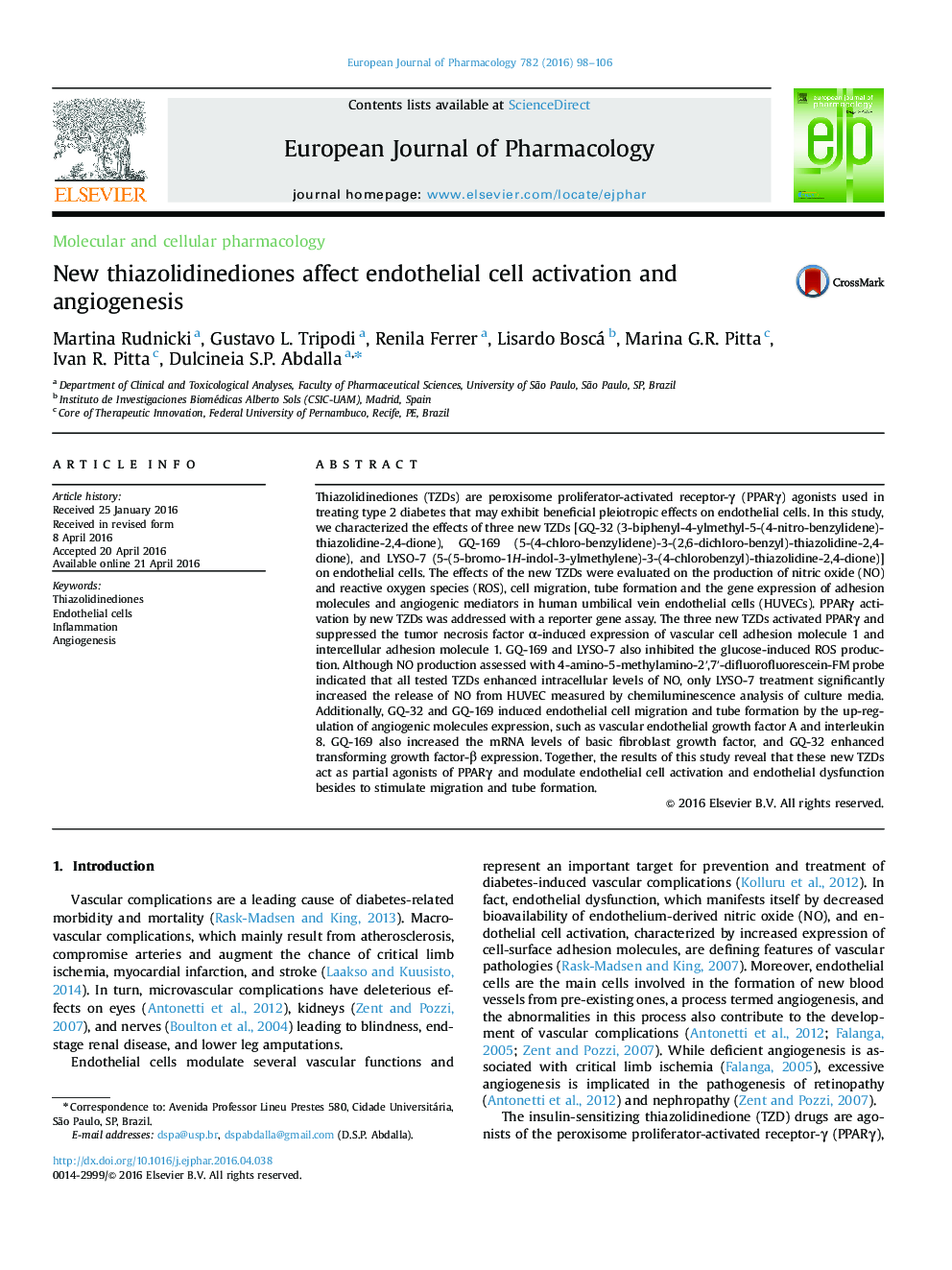| Article ID | Journal | Published Year | Pages | File Type |
|---|---|---|---|---|
| 5826755 | European Journal of Pharmacology | 2016 | 9 Pages |
Abstract
Thiazolidinediones (TZDs) are peroxisome proliferator-activated receptor-γ (PPARγ) agonists used in treating type 2 diabetes that may exhibit beneficial pleiotropic effects on endothelial cells. In this study, we characterized the effects of three new TZDs [GQ-32 (3-biphenyl-4-ylmethyl-5-(4-nitro-benzylidene)-thiazolidine-2,4-dione), GQ-169 (5-(4-chloro-benzylidene)-3-(2,6-dichloro-benzyl)-thiazolidine-2,4-dione), and LYSO-7 (5-(5-bromo-1H-indol-3-ylmethylene)-3-(4-chlorobenzyl)-thiazolidine-2,4-dione)] on endothelial cells. The effects of the new TZDs were evaluated on the production of nitric oxide (NO) and reactive oxygen species (ROS), cell migration, tube formation and the gene expression of adhesion molecules and angiogenic mediators in human umbilical vein endothelial cells (HUVECs). PPARγ activation by new TZDs was addressed with a reporter gene assay. The three new TZDs activated PPARγ and suppressed the tumor necrosis factor α-induced expression of vascular cell adhesion molecule 1 and intercellular adhesion molecule 1. GQ-169 and LYSO-7 also inhibited the glucose-induced ROS production. Although NO production assessed with 4-amino-5-methylamino-2â²,7â²-difluorofluorescein-FM probe indicated that all tested TZDs enhanced intracellular levels of NO, only LYSO-7 treatment significantly increased the release of NO from HUVEC measured by chemiluminescence analysis of culture media. Additionally, GQ-32 and GQ-169 induced endothelial cell migration and tube formation by the up-regulation of angiogenic molecules expression, such as vascular endothelial growth factor A and interleukin 8. GQ-169 also increased the mRNA levels of basic fibroblast growth factor, and GQ-32 enhanced transforming growth factor-β expression. Together, the results of this study reveal that these new TZDs act as partial agonists of PPARγ and modulate endothelial cell activation and endothelial dysfunction besides to stimulate migration and tube formation.
Related Topics
Life Sciences
Neuroscience
Cellular and Molecular Neuroscience
Authors
Martina Rudnicki, Gustavo L. Tripodi, Renila Ferrer, Lisardo Boscá, Marina G.R. Pitta, Ivan R. Pitta, Dulcineia S.P. Abdalla,
